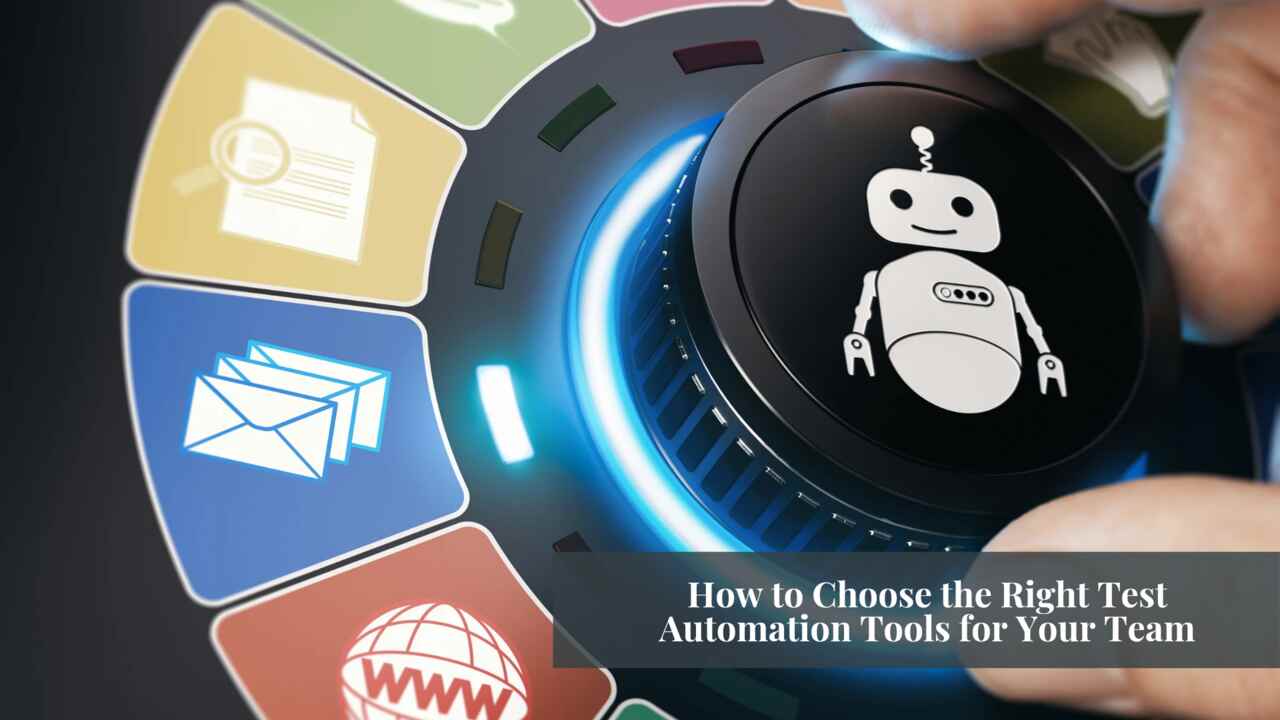In the fast-paced world of software development, test automation plays a critical role in ensuring both the speed and quality of product releases. Automated testing accelerates the development cycle, enhances product reliability, and allows your team to focus on more innovative tasks.
However, with the variety of test automation tools available, choosing the right one can be challenging. This blog post will walk you through the key factors to consider when selecting a test automation tool, helping you streamline your testing process and improve your software’s overall quality.
Understanding Automation Testing and Its Importance
Before diving into tool selection, let’s clarify what automation testing is and why it matters. Automation testing involves using software to execute predefined test scripts without human intervention. These scripts replicate user actions, ensuring your application performs as expected across a range of scenarios.
You can explore a comprehensive automation tools list to get an overview of available tools and their features.
Automated tests enhance efficiency and accuracy by reducing repetitive tasks, freeing your team to focus on new feature development. Automated tests also provide faster feedback in Continuous Integration (CI) environments, where code changes are frequent, helping you catch bugs early and improve your final product.
Key Factors to Consider When Choosing a Test Automation Tool
Selecting the right tool involves evaluating factors unique to your team, project, and goals. Here are some critical considerations:
1. Application Type and Platform Compatibility
Different tools specialize in various types of applications. For example, tools like Appium are designed for mobile apps, while others, like Selenium and Cypress, excel in web application testing. Before making a decision, evaluate the platforms your product will run on and ensure the tool you choose supports these environments.
2. Team Skill Level and Learning Curve
Consider your team’s experience and technical proficiency. Some tools, like Selenium, require knowledge of programming languages, making them suitable for teams with strong coding skills. Others, like testRigor or SpecFlow, offer code-free interfaces that allow non-technical testers to participate without extensive training.
Choosing a tool that aligns with your team’s skills will simplify the implementation process and ensure maximum productivity.
3. Budget and Licensing Costs
Automation tools range from free, open-source options to paid enterprise solutions. While free tools like Selenium are budget-friendly, they may lack advanced features and dedicated support. Paid tools often provide comprehensive support, integration capabilities, and scalability, which can be beneficial for larger or more complex projects.
Consider both your immediate needs and long-term scalability requirements when evaluating costs.
4. Integration with Development Tools
Automated testing isn’t isolated; it should work seamlessly with your existing development pipeline, including CI/CD tools (e.g., Jenkins), version control systems (e.g., GitHub), and bug-tracking software (e.g., JIRA). Ensuring compatibility with your current stack is essential for smooth collaboration between development, testing, and operations teams.
5. Scalability and Flexibility
As your project grows, so will your testing needs. The tool you choose should be able to scale with your product and accommodate more extensive test scenarios or higher test volumes over time. Look for solutions that can handle increased complexity, allowing you to automate additional parts of the testing process as needed.
6. Support and Documentation
Effective support and thorough documentation can make a significant difference, especially if you encounter technical issues or need guidance. Tools backed by reliable customer support, active user communities, and comprehensive documentation can save your team time and frustration.
Some tools, like testRigor, offer extensive user forums, tutorials, and third-party integrations, creating a supportive environment that enhances the tool’s usability.
Popular Automation Testing Tools
To help you get started, here’s a quick look at some widely-used automation tools and what they offer:
- Selenium: Known for its flexibility and extensive integration options, Selenium supports multiple programming languages and is commonly used for web applications. It’s highly popular among developers due to its open-source nature and ability to integrate with CI/CD tools like Jenkins.
- Cypress: Built with a focus on modern web applications, Cypress offers a simple setup, fast execution, and a user-friendly interface, making it an excellent choice for front-end developers working with JavaScript-based projects.
- Appium: This open-source tool is specifically designed for mobile app testing and supports both Android and iOS platforms. Appium is ideal for teams focused on mobile development, allowing them to automate tests across a range of devices.
Considering Automated Testing Services
In addition to choosing an automation tool, many organizations leverage automated testing services to manage complex testing requirements. These services provide expertise, infrastructure, and dedicated support, alleviating some of the burdens on your internal team.
When considering a testing service, evaluate their experience with your application type, the specific tools they use, and overall costs. The right service can make automation easier and more effective, particularly for large-scale projects.
Conclusion
Selecting the right test automation tools for your team is a decision that will impact your development speed, efficiency, and product quality. By assessing factors like application type, team skill level, budget, and integration needs, you can make an informed choice that will streamline your workflow and improve your testing process.
Whether you choose a free tool or invest in a paid solution, finding the right match for your team’s unique requirements will help reduce errors, save time, and deliver a more polished product. As you look ahead, staying updated on broader tech trends, like those shaping app development in 2025, can also provide valuable context for your automation strategy.
Thank you for taking the time to explore these insights to make your automation journey smoother and more successful.












